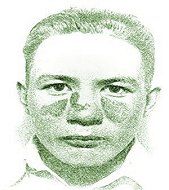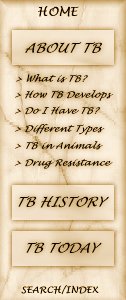
Other Forms of Tuberculosis
Other Areas TB Might Occur |
 |
|
In occasional cases of lung TB, the bronchial tubes may be involved. As disease of the bronchial tubes progresses, it causes wheezing and severe coughing. Lesions or sores of the larynx (voice box) may appear, but with today’s modern treatment they are rare.
Tuberculosis rarely appears in the stomach, gall bladder, or pancreas, but it may occur in the intestines or the rectum. Less often it locates in the liver. Drug treatment usually results in rapid improvement.

|
| A tuberculous skin infection on the face of a young boy (photo taken in 1936). |
As a result of the spreading of tuberculosis, fluid may collect in the abdomen or between the membranes covering the lungs (wet pleurisy). This usually disappears under drug treatment. Fluid may also appear in the pericardium, the thin sac that contains the heart. The heart muscle itself is rarely involved.
In the few cases where TB attacks the eyes, the course of the disease is slow and can be stopped by treatment. Occasionally the middle ear is affected.
These conditions are now found only rarely in countries, like Canada, where the amount of tuberculosis infection is low. The widespread use of preventive therapy is making them even more rare.
